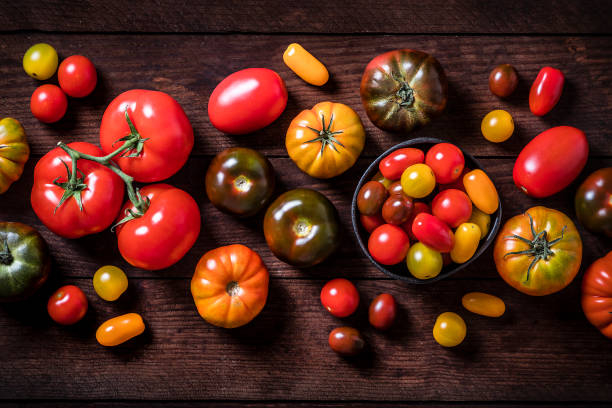Kinds of Diets
How To Incorporate More Whole Foods Into Your Diet
Want to enhance your nutrition by including more whole foods into your everyday meals? You are in the correct place! In this article, we’ll show you how to make small modifications to your eating habits and include more whole foods in your diet. Whole foods are nutrient-dense, minimally processed foods that offer a variety of health benefits. By including whole foods into your meals, you will not only improve your overall nutrition but also boost your energy levels and promote your long-term health.
What Are Whole Foods?
Whole foods are natural, unprocessed, or minimally processed foods that are as close to their native state as possible. These foods are high in vitamins, minerals, antioxidants, and fiber. Whole foods include fruits and vegetables, whole grains, legumes, nuts, and seeds. Unlike processed foods, which frequently have added sugars, harmful fats, and artificial additives, whole foods supply your body with the nutrients it requires to thrive.
Incorporating more whole foods into your diet can provide several health benefits, such as improved digestion, higher energy, lower risk of chronic diseases, and better weight management. Furthermore, real foods are frequently more full and fulfilling than processed foods, which can help control cravings and prevent overeating.

The Importance of Variety in a Whole Foods Diet
Variety is essential while following a whole foods diet. Consuming a variety of whole foods ensures that you receive a diversified range of nutrients, which is critical for good health. Each whole food contains a unique combination of vitamins, minerals, and phytochemicals, so include a variety of fruits, vegetables, whole grains, and other whole foods in your meals.
To add diversity to your diet, try to eat foods of different hues. For example, red fruits and vegetables like tomatoes and bell peppers are high in lycopene, whereas green leafy vegetables like spinach and kale are high in chlorophyll. By including foods from all hue groups, you’ll get a variety of nutrients.
Tips for Shopping for Whole Foods
When shopping for whole foods, remember to favor fresh, seasonal produce. Farmers’ markets and local grocery stores are excellent places to purchase fresh, locally grown produce. To reduce your exposure to pesticides and other dangerous chemicals, choose organic products whenever possible.
In addition to fresh produce, make sure to check out the bulk aisle of your grocery store. Whole grains, legumes, nuts, and seeds are available in abundance here. Purchasing in bulk not only saves money, but also gives you control over the quantity and quality of the ingredients you buy.
When choosing packaged foods, examine the ingredient list carefully. Choose items with few ingredients and avoid those containing extra sugars, bad fats, and artificial additives. Remember, the more closely a product resembles its natural state, the better.
How to Meal Plan with Whole Foods
Meal planning is an efficient way to incorporate more whole foods into your diet. Planning your meals ahead of time allows you to have healthful options on hand and reduces the temptation to grab for processed foods.
Begin by devoting aside time each week to organize your meals. Think about your schedule, eating choices, and nutritional needs. Aim for a variety of fruits, vegetables, whole grains, lean meats, and healthy fats in each meal.
Once you’ve devised a meal plan, make a shopping list based on it. This will allow you to keep organized and avoid buying unneeded goods. When cooking meals, attempt to batch cook and prep items ahead of time to save time during the week. To ensure freshness, store prepared ingredients in sealed containers.

Easy Ways to Add More Whole Foods to Your Meals
Adding more whole foods to your meals does not have to be difficult. Here are some easy ways to incorporate whole foods into your everyday routine:
- Start your day with a nutritious breakfast of oatmeal or yogurt topped with fruits, nuts, or seeds.
- Replace processed grains with whole grains, such as quinoa, brown rice, and whole wheat bread.
- Include a dish of veggies with each meal. Incorporate leafy greens into your salads, sautéed vegetables into your stir-fries, or roasted vegetables as a side dish.
- Snack on whole foods such as fresh fruit, raw almonds, and sliced vegetables with hummus.
- Instead of relying on manufactured sauces and seasonings, experiment with different herbs and spices to enhance the flavor of your dishes.
- Rather than processed meats, choose lean proteins such as chicken, fish, tofu, or lentils.
- Instead of sugary beverages, drink water, herbal tea, or make your own fruit-infused water.
By adopting these simple modifications into your everyday routine, you will gradually increase your intake of whole foods while also improving your overall nutrition.
Delicious Whole Food Recipes to Try
Looking for motivation to get started? Here are some tasty whole-food recipes to try:
- Quinoa Salad with Roasted veggies: Combine cooked quinoa, roasted veggies such bell peppers, zucchini, and cherry tomatoes. Drizzle with a lemon-tahini dressing for extra taste.
- Sweet Potato and Black Bean Tacos: Fill whole wheat tortillas with mashed sweet potatoes, black beans, avocado slices, and cilantro. Serve with a side of Greek yogurt or salsa.
- Berry Chia Pudding: Combine chia seeds, almond milk, a touch of honey, and fresh berries. Allow it to settle in the fridge overnight, then enjoy a creamy and nutritious pudding in the morning.
Feel free to change these recipes according to your preferences and the ingredients you have on hand. When it comes to making wonderful meals out of healthy foods, the options are unlimited.

How to Transition to a Whole Foods Diet Gradually
Transitioning to a whole foods diet does not have to occur overnight. In reality, making modest changes is typically more sustainable and manageable. Here are some suggestions to help you transition at your own pace:
- Begin by substituting one processed food item for a whole food alternative each week. For example, instead of sugary breakfast cereal, try oatmeal topped with fresh fruit.
- Gradually boost your intake of fruits and vegetables by include an extra serving with each meal. Over time, try to fill half of your plate with bright produce.
- Experiment with new whole grains like quinoa, millet, and farro. Replace processed carbohydrates such as white rice and pasta with these nutrient-dense alternatives.
- Reduce your intake of processed snacks by gradually replacing them with nutritious foods such as carrot sticks with hummus, apple slices with almond butter, or homemade trail mix.
- Get creative in the kitchen by experimenting with new whole food recipes, tastes, and cooking methods. This will make the switch to a whole foods diet more interesting and enjoyable.
Remember: progress is more vital than perfection. Be patient with yourself and applaud every small step you make toward a healthy, whole-foods lifestyle.
Common Misconceptions About Whole Foods
There are a few prevalent misconceptions regarding whole foods that may discourage some people from include them in their diet. Let us address these misconceptions:
- Whole foods are expensive: While some whole foods may be more expensive than processed alternatives, there are other low-cost solutions. Bulk buying, seasonal purchasing, and meal preparation can all help you save money.
- Whole foods are time-consuming to prepare: While some whole meals take more preparation, there are many quick and easy solutions accessible. Pre-washed salads, frozen fruits and vegetables, and canned beans are also convenient options.
- Whole foods are bland and boring: This could not be further from the truth! Whole foods can be extremely tasty and varied. Experiment with herbs, spices, and cooking methods to make tasty and satisfying meals.
Conclusion
In my journey towards better health and well-being, I’ve discovered the transformative power of incorporating more whole foods into my diet. Making simple changes to my eating habits, being mindful during grocery shopping, and experimenting with new recipes have allowed me to reap the countless benefits of a whole foods lifestyle. I remind myself that every small step counts, and the choices I make each day contribute to the overall improvement of my health. So, I’ve taken the initiative to start incorporating more whole foods into my meals, and I can already feel my body thanking me for it!


